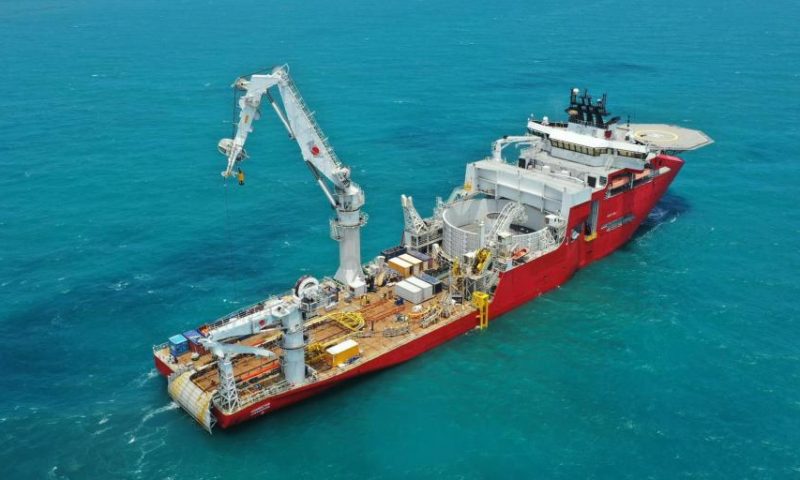
Jan De Nul successfully connects TenneT’s electricity network in The Netherlands and continues to invest in its offshore installation fleet in support of its energy business
Wouter Vermeersch, Manager Offshore Cables at Jan De Nul Group: “The Hollandse Kust (noord) and (west Alpha) project showcases our expertise in cable installation works. Jan De Nul has a very modern cable installation fleet, with three large cable installation vessels, supporting trenchers and amphibious cranes. Our investment in an additional Offshore Support Vessel, that in legacy of her history and track record will be renamed as Symphony, underlines Jan De Nul Group’s vision to offer the world a solution to the badly needed energy transition. With the success in the Netherlands and the investment in its offshore installation fleet, Jan De Nul validates its expertise in and resolute commitment to this energy transition.”
FOR HOLLANDSE KUST (NOORD) JAN DE NUL DEPLOYED A DIVERSE FLEET OF IN-HOUSE CABLE INSTALLATION EQUIPMENT
The cable installation vessel Isaac Newton installed the cables on the seabed. In addition, Jan De Nul used several remote-controlled underwater trenchers and amphibious cranes in the surf zone to bury and protect the cable in the seabed. The Moonfish (picture) is one of these trenchers, a Jan De Nul design tailored to the needs of this project.
In the spring, the cable installation vessel Isaac Newton collected the first lot of 90 kilometres of sea cable from our consortium partner LS Cable & System in South Korea. After arriving in the Netherlands, the Isaac Newton installed four different sea cables, starting from the beach.
- Two cables were laid in one length on the seabed, all the way to the transformer station of Hollandse Kust (noord).
- For the connection to the transformer station of Hollandse Kust (west Alpha), the Isaac Newton installed the first 8 kilometres of both sea cables, starting from the beach.
Next, the trencher Moonfish set to work, burying and protecting the sea cables in the seabed.
- In the first phase, the Moonfish buried the first section of the two Hollandse Kust (noord) sea cables in the seabed, from the beach up to 3 kilometres offshore, at a depth of about 6 to 8 metres. From three kilometres offshore, the submarine vehicle UTV1200 took over, laying the cable up to the transformer station. This ‘offshore socket’ is located 18 kilometres off the Dutch coast.
- After the summer high season, in October, Jan De Nul completed this first installation campaign by burying the two cable sections for Hollandse Kust (west Alpha) from the beach up to 3 kilometres offshore.













